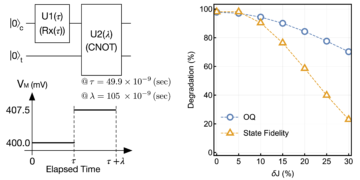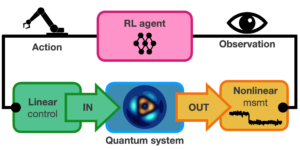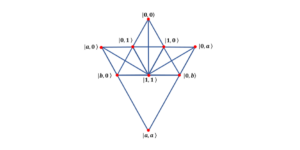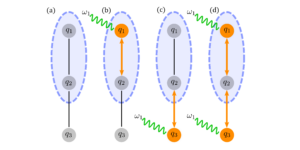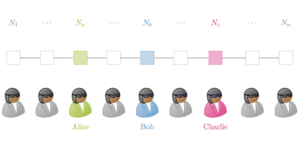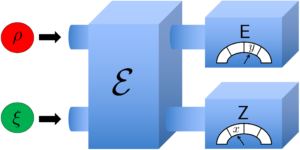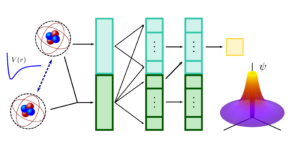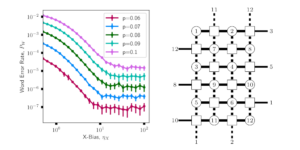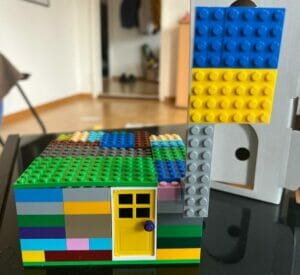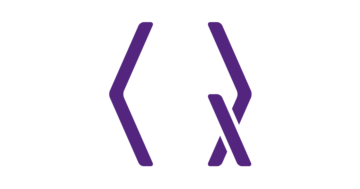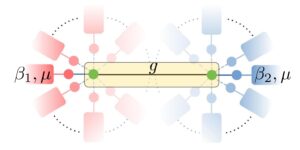1Department of Microtechnology and Nanoscience, MC2, Chalmers University of Technology, 412 96 Gothenburg, Sweden
2Volvo Group Trucks Technology, 405 08 Gothenburg, Sweden
3Future Technologies, Saab Surveillance, 412 76 Gothenburg, Sweden
4Department of Chemistry and Chemical Engineering, Chalmers University of Technology, 412 96 Gothenburg, Sweden
5Department of Physics, Chalmers University of Technology, 412 96 Gothenburg, Sweden
Find this paper interesting or want to discuss? Scite or leave a comment on SciRate.
Abstract
Variational quantum algorithms (VQAs) represent a promising approach to utilizing current quantum computing infrastructures. VQAs are based on a parameterized quantum circuit optimized in a closed loop via a classical algorithm. This hybrid approach reduces the quantum processing unit load but comes at the cost of a classical optimization that can feature a flat energy landscape. Existing optimization techniques, including either imaginary time-propagation, natural gradient, or momentum-based approaches, are promising candidates but place either a significant burden on the quantum device or suffer frequently from slow convergence. In this work, we propose the quantum Broyden adaptive natural gradient (qBang) approach, a novel optimizer that aims to distill the best aspects of existing approaches. By employing the Broyden approach to approximate updates in the Fisher information matrix and combining it with a momentum-based algorithm, qBang reduces quantum-resource requirements while performing better than more resource-demanding alternatives. Benchmarks for the barren plateau, quantum chemistry, and the max-cut problem demonstrate an overall stable performance with a clear improvement over existing techniques in the case of flat (but not exponentially flat) optimization landscapes. qBang introduces a new development strategy for gradient-based VQAs with a plethora of possible improvements.
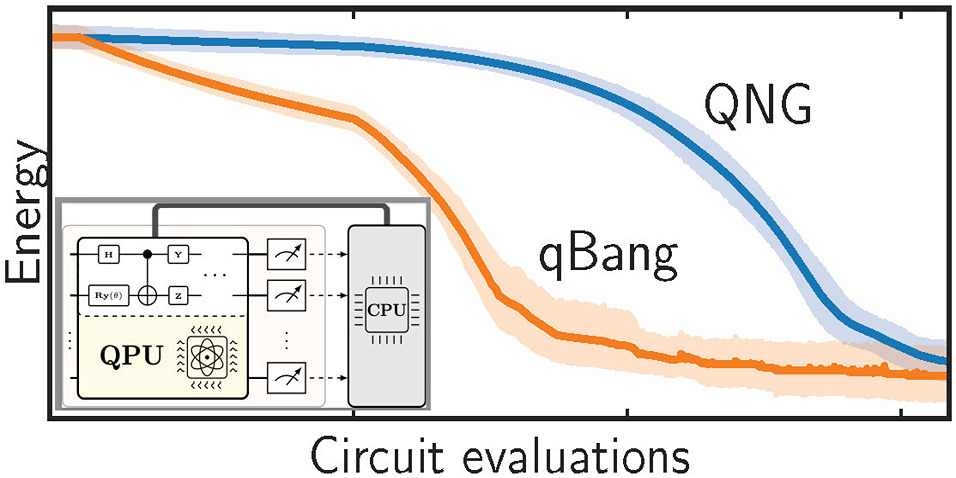
Featured image: Comparison of optimization performance of quantum Broyden adaptive natural gradient (qBang) and quantum natural gradient (QNG) in finding the ground state energy of Lithium hydride, LiH.
Popular summary
► BibTeX data
► References
[1] M. Cerezo, A. Arrasmith, R. Babbush, S. C. Benjamin, S. Endo, K. Fujii, J. R. McClean, K. Mitarai, X. Yuan, L. Cincio, and P. J. Coles. “Variational quantum algorithms”. Nature Reviews Physics 3, 625–644 (2021).
https://doi.org/10.1038/s42254-021-00348-9
[2] K. Bharti, A. Cervera-Lierta, T. H. Kyaw, T. Haug, S. Alperin-Lea, A. Anand, M. Degroote, H. Heimonen, J. S. Kottmann, T. Menke, W.-K. Mok, S. Sim, L.-C. Kwek, and A. Aspuru-Guzik. “Noisy intermediate-scale quantum algorithms”. Reviews of Modern Physics 94, 015004 (2022).
https://doi.org/10.1103/RevModPhys.94.015004
[3] J. Tilly, H. Chen, S. Cao, D. Picozzi, K. Setia, Y. Li, E. Grant, L. Wossnig, I. Rungger, G. H. Booth, and J. Tennyson. “The Variational Quantum Eigensolver: A review of methods and best practices”. Physics Reports 986, 1–128 (2022).
https://doi.org/10.1016/j.physrep.2022.08.003
[4] F. Arute et al. “Quantum supremacy using a programmable superconducting processor.”. Nature 574, 505–510 (2019).
https://doi.org/10.1038/s41586-019-1666-5
[5] C. D. Bruzewicz, J. Chiaverini, R. McConnell, and J. M. Sage. “Trapped-ion quantum computing: Progress and challenges”. Applied Physics Reviews 6, 021314 (2019).
https://doi.org/10.1063/1.5088164
[6] A. J. Daley, I. Bloch, C. Kokail, S. Flannigan, N. Pearson, M. Troyer, and P. Zoller. “Practical quantum advantage in quantum simulation”. Nature 607, 667–676 (2022).
https://doi.org/10.1038/s41586-022-04940-6
[7] S. Bravyi, O. Dial, J. M. Gambetta, D. Gil, and Z. Nazario. “The future of quantum computing with superconducting qubits”. Journal of Applied Physics 132, 160902 (2022).
https://doi.org/10.1063/5.0082975
[8] J. Preskill. “Quantum computing in the NISQ era and beyond”. Quantum 2, 79 (2018).
https://doi.org/10.22331/q-2018-08-06-79
[9] A. Peruzzo, J. McClean, P. Shadbolt, M. H. Yung, X. Q. Zhou, P. J. Love, A. Aspuru-Guzik, and J. L. O’Brien. “A variational eigenvalue solver on a photonic quantum processor”. Nature Communications 5 (2014).
https://doi.org/10.1038/ncomms5213
[10] D. Wecker, M. B. Hastings, and M. Troyer. “Progress towards practical quantum variational algorithms”. Phys. Rev. A 92, 042303 (2015).
https://doi.org/10.1103/PhysRevA.92.042303
[11] J. R. McClean, J. Romero, R. Babbush, and A. Aspuru-Guzik. “The theory of variational hybrid quantum-classical algorithms”. New Journal of Physics 18, 023023 (2016).
https://doi.org/10.1088/1367-2630/18/2/023023
[12] S. Endo, Z. Cai, S. C. Benjamin, and X. Yuan. “Hybrid quantum-classical algorithms and quantum error mitigation”. Journal of the Physical Society of Japan 90, 032001 (2021).
https://doi.org/10.7566/jpsj.90.032001
[13] D. P. Kingma and J. Ba. “Adam: A method for stochastic optimization” (2017). arXiv:1412.6980.
arXiv:1412.6980
[14] K. Mitarai, M. Negoro, M. Kitagawa, and K. Fujii. “Quantum circuit learning”. Physical Review A 98, 032309 (2018).
https://doi.org/10.1103/PhysRevA.98.032309
[15] L. Banchi and G. E. Crooks. “Measuring analytic gradients of general quantum evolution with the stochastic parameter shift rule”. Quantum 5, 386 (2021).
https://doi.org/10.22331/q-2021-01-25-386
[16] M. Schuld, V. Bergholm, C. Gogolin, J. Izaac, and N. Killoran. “Evaluating analytic gradients on quantum hardware”. Physical Review A 99, 032331 (2019).
https://doi.org/10.1103/PhysRevA.99.032331
[17] L. D’Alessio, Y. Kafri, A. Polkovnikov, and M. Rigol. “From quantum chaos and eigenstate thermalization to statistical mechanics and thermodynamics”. Advances in Physics 65, 239–362 (2016).
https://doi.org/10.1080/00018732.2016.1198134
[18] J. R. McClean, S. Boixo, V. N. Smelyanskiy, R. Babbush, and H. Neven. “Barren plateaus in quantum neural network training landscapes”. Nature Communications 9, 4812 (2018).
https://doi.org/10.1038/s41467-018-07090-4
[19] Z. Holmes, K. Sharma, M. Cerezo, and P. J. Coles. “Connecting ansatz expressibility to gradient magnitudes and barren plateaus”. PRX Quantum 3, 010313 (2022).
https://doi.org/10.1103/PRXQuantum.3.010313
[20] M. Cerezo, A. Sone, T. Volkoff, L. Cincio, and P. J. Coles. “Cost function dependent barren plateaus in shallow parametrized quantum circuits”. Nature Communications 12, 1791 (2021).
https://doi.org/10.1038/s41467-021-21728-w
[21] S. Wang, E. Fontana, M. Cerezo, K. Sharma, A. Sone, L. Cincio, and P. J. Coles. “Noise-induced barren plateaus in variational quantum algorithms”. Nature Communications 12 (2021).
https://doi.org/10.1038/s41467-021-27045-6
[22] J. Stokes, J. Izaac, N. Killoran, and G. Carleo. “Quantum Natural Gradient”. Quantum 4, 269 (2020).
https://doi.org/10.22331/q-2020-05-25-269
[23] J. Gacon, C. Zoufal, G. Carleo, and S. Woerner. “Simultaneous perturbation stochastic approximation of the quantum Fisher information”. Quantum 5, 567 (2021).
https://doi.org/10.22331/q-2021-10-20-567
[24] J. Liu, H. Yuan, X.-M. Lu, and X. Wang. “Quantum Fisher information matrix and multiparater estimation”. Journal of Physics A: Mathematical and Theoretical 53, 023001 (2020).
https://doi.org/10.1088/1751-8121/ab5d4d
[25] D. Wierichs, C. Gogolin, and M. Kastoryano. “Avoiding local minima in variational quantum eigensolvers with the natural gradient optimizer”. Physical Review Research 2, 043246 (2020).
https://doi.org/10.1103/PhysRevResearch.2.043246
[26] B. Koczor and S. C. Benjamin. “Quantum natural gradient generalized to noisy and nonunitary circuits”. Phys. Rev. A 106, 062416 (2022).
https://doi.org/10.1103/PhysRevA.106.062416
[27] J. L. Beckey, M. Cerezo, A. Sone, and P. J. Coles. “Variational quantum algorithm for estimating the quantum Fisher information”. Physical Review Research 4, 013083 (2022).
https://doi.org/10.1103/PhysRevResearch.4.013083
[28] J. Gacon, J. Nys, R. Rossi, S. Woerner, and G. Carleo. “Variational quantum time evolution without the quantum geometric tensor”. Phys. Rev. Res. 6, 013143 (2024).
https://doi.org/10.1103/PhysRevResearch.6.013143
[29] C. G. Broyden. “The convergence of a class of double-rank minimization algorithms 1. General considerations”. IMA Journal of Applied Mathematics 6, 76–90 (1970).
https://doi.org/10.1093/imamat/6.1.76
[30] M. Motta, C. Sun, A. T. K. Tan, M. J. O. Rourke, E. Ye, A. J. Minnich, F. G. S. L. Brandao, and G. K.-L. Chan. “Determining eigenstates and thermal states on a quantum computer using quantum imaginary time evolution”. Nature Physics 16, 205–210 (2020).
https://doi.org/10.1038/s41567-019-0704-4
[31] S. McArdle, T. Jones, S. Endo, Y. Li, S. C. Benjamin, and X. Yuan. “Variational ansatz-based quantum simulation of imaginary time evolution”. npj Quantum Information 5, 75 (2019).
https://doi.org/10.1038/s41534-019-0187-2
[32] X. Yuan, S. Endo, Q. Zhao, Y. Li, and S. Benjamin. “Theory of variational quantum simulation”. Quantum 3, 191 (2019).
https://doi.org/10.22331/q-2019-10-07-191
[33] C. Cao, Z. An, S.-Y. Hou, D. L. Zhou, and B. Zeng. “Quantum imaginary time evolution steered by reinforcement learning”. Communications Physics 5, 57 (2022).
https://doi.org/10.1038/s42005-022-00837-y
[34] V. Havlíček, A. D. Córcoles, K. Temme, A. W. Harrow, A. Kandala, J. M. Chow, and J. M. Gambetta. “Supervised learning with quantum-enhanced feature spaces”. Nature 567, 209–212 (2019).
https://doi.org/10.1038/s41586-019-0980-2
[35] A. Kandala, A. Mezzacapo, K. Temme, M. Takita, M. Brink, J. M. Chow, and J. M. Gambetta. “Hardware-efficient variational quantum eigensolver for small molecules and quantum magnets”. Nature 549, 242–246 (2017).
https://doi.org/10.1038/nature23879
[36] E. Farhi, J. Goldstone, and S. Gutmann. “A Quantum Approximate Optimization Algorithm” (2014). arXiv:1411.4028.
arXiv:1411.4028
[37] S. Sim, P. D. Johnson, and A. Aspuru-Guzik. “Expressibility and entangling capability of parameterized quantum circuits for hybrid quantum-classical algorithms”. Advanced Quantum Technologies 2, 1900070 (2019).
https://doi.org/10.1002/qute.201900070
[38] D. Wierichs, J. Izaac, C. Wang, and C. Y.-Y. Lin. “General parameter-shift rules for quantum gradients”. Quantum 6, 677 (2022).
https://doi.org/10.22331/q-2022-03-30-677
[39] A. Lucas. “Ising formulations of many NP problems”. Frontiers in Physics 2, 1–14 (2014).
https://doi.org/10.3389/fphy.2014.00005
[40] S. Hadfield, Z. Wang, B. O’Gorman, E. G. Rieffel, D. Venturelli, and R. Biswas. “From the Quantum Approximate Optimization Algorithm to a Quantum Alternating Operator Ansatz”. Algorithms 12, 34 (2019).
https://doi.org/10.3390/a12020034
[41] M. Svensson, M. Andersson, M. Grönkvist, P. Vikstål, D. Dubhashi, G. Ferrini, and G. Johansson. “A Heuristic Method to solve large-scale Integer Linear Programs by combining Branch-and-Price with a Quantum Algorithm” (2021). arXiv:2103.15433.
arXiv:2103.15433
[42] W. Lavrijsen, A. Tudor, J. Müller, C. Iancu, and W. de Jong. “Classical optimizers for noisy intermediate-scale quantum devices”. In 2020 IEEE International Conference on Quantum Computing and Engineering (QCE). Pages 267–277. (2020).
https://doi.org/10.1109/QCE49297.2020.00041
[43] Y. Cao, J. Romero, J. P. Olson, M. Degroote, P. D. Johnson, M. Kieferová, I. D. Kivlichan, T. Menke, B. Peropadre, N. P. D. Sawaya, S. Sim, L. Veis, and A. Aspuru-Guzik. “Quantum chemistry in the age of quantum computing”. Chemical Reviews 119, 10856–10915 (2019).
https://doi.org/10.1021/acs.chemrev.8b00803
[44] V. Lordi and J. M. Nichol. “Advances and opportunities in materials science for scalable quantum computing”. MRS Bulletin 46, 589–595 (2021).
https://doi.org/10.1557/s43577-021-00133-0
[45] G. E. Crooks. “Gradients of parameterized quantum gates using the parameter-shift rule and gate decomposition” (2019). quant-ph:1905.13311.
arXiv:1905.13311
[46] J. Martens. “New insights and perspectives on the natural gradient method”. Journal of Machine Learning Research 21, 1–76 (2020). url: https://www.jmlr.org/papers/v21/17-678.html.
https://www.jmlr.org/papers/v21/17-678.html
[47] J. Martens and I. Sutskever. “Training deep and recurrent networks with Hessian-free optimization”. Pages 479–535. Springer Berlin Heidelberg. (2012).
https://doi.org/10.1007/978-3-642-35289-8_27
[48] D. F. Shanno. “Conditioning of quasi-Newton methods for function minimization”. Mathematics of Computation 24, 647–656 (1970).
https://doi.org/10.1090/s0025-5718-1970-0274029-x
[49] R. Fletcher. “A new approach to variable metric algorithms”. The Computer Journal 13, 317–322 (1970).
https://doi.org/10.1093/comjnl/13.3.317
[50] D. Goldfarb. “A family of variable-metric methods derived by variational means”. Mathematics of Computation 24, 23–26 (1970).
https://doi.org/10.1090/s0025-5718-1970-0258249-6
[51] S. Ruder. “An overview of gradient descent optimization algorithms” (2016). arXiv:1609.04747.
arXiv:1609.04747
[52] G. C. Wick. “Properties of Bethe-Salpeter wave functions”. Phys. Rev. 96, 1124–1134 (1954).
https://doi.org/10.1103/PhysRev.96.1124
[53] T. Tsuchimochi, Y. Ryo, S. L. Ten-no, and K. Sasasako. “Improved algorithms of quantum imaginary time evolution for ground and excited states of molecular systems”. Journal of Chemical Theory and Computation (2023).
https://doi.org/10.1021/acs.jctc.2c00906
[54] W. von der Linden. “A quantum Monte Carlo approach to many-body physics”. Physics Reports 220, 53–162 (1992).
https://doi.org/10.1016/0370-1573(92)90029-y
[55] D. M. Ceperley. “Path integrals in the theory of condensed helium”. Rev. Mod. Phys. 67, 279–355 (1995).
https://doi.org/10.1103/RevModPhys.67.279
[56] N. Trivedi and D. M. Ceperley. “Ground-state correlations of quantum antiferromagnets: A Green-function Monte Carlo study”. Phys. Rev. B 41, 4552–4569 (1990).
https://doi.org/10.1103/PhysRevB.41.4552
[57] K. Guther, R. J. Anderson, N. S. Blunt, N. A. Bogdanov, D. Cleland, N. Dattani, W. Dobrautz, K. Ghanem, P. Jeszenszki, N. Liebermann, et al. “NECI: N-Electron Configuration Interaction with an emphasis on state-of-the-art stochastic methods”. The Journal of Chemical Physics 153, 034107 (2020).
https://doi.org/10.1063/5.0005754
[58] A. McLachlan. “A variational solution of the time-dependent Schrodinger equation”. Molecular Physics 8, 39–44 (1964).
https://doi.org/10.1080/00268976400100041
[59] C. Zoufal, D. Sutter, and S. Woerner. “Error bounds for variational quantum time evolution”. Phys. Rev. Appl. 20, 044059 (2023).
https://doi.org/10.1103/PhysRevApplied.20.044059
[60] G. Fubini. “Sulla teoria delle funzioni automorfe e delle loro trasformazioni”. Annali di Matematica Pura ed Applicata 14, 33–67 (1908).
https://doi.org/10.1007/bf02420184
[61] E. Study. “Kürzeste wege im komplexen gebiet”. Mathematische Annalen 60, 321–378 (1905).
https://doi.org/10.1007/bf01457616
[62] Y. Yao, P. Cussenot, R. A. Wolf, and F. Miatto. “Complex natural gradient optimization for optical quantum circuit design”. Phys. Rev. A 105, 052402 (2022).
https://doi.org/10.1103/PhysRevA.105.052402
[63] F. Wilczek and A. Shapere. “Geometric phases in physics”. World Scientific Publishing. (1989).
https://doi.org/10.1142/0613
[64] L. Hackl, T. Guaita, T. Shi, J. Haegeman, E. Demler, and J. I. Cirac. “Geometry of variational methods: dynamics of closed quantum systems”. SciPost Phys. 9, 048 (2020).
https://doi.org/10.21468/SciPostPhys.9.4.048
[65] S. Zhou and L. Jiang. “An exact correspondence between the quantum Fisher information and the Bures metric” (2019). arXiv:1910.08473.
arXiv:1910.08473
[66] V. Giovannetti, S. Lloyd, and L. Maccone. “Advances in quantum metrology”. Nature Photonics 5, 222–229 (2011).
https://doi.org/10.1038/nphoton.2011.35
[67] D. Petz and C. Sudár. “Geometries of quantum states”. Journal of Mathematical Physics 37, 2662–2673 (1996).
https://doi.org/10.1063/1.531535
[68] J. P. Provost and G. Vallee. “Riemannian structure on manifolds of quantum states”. Communications in Mathematical Physics 76, 289–301 (1980).
https://doi.org/10.1007/bf02193559
[69] C.-Y. Park and M. J. Kastoryano. “Geometry of learning neural quantum states”. Physical Review Research 2, 023232 (2020).
https://doi.org/10.1103/PhysRevResearch.2.023232
[70] S. L. Braunstein and C. M. Caves. “Statistical distance and the geometry of quantum states”. Phys. Rev. Lett. 72, 3439–3443 (1994).
https://doi.org/10.1103/PhysRevLett.72.3439
[71] P. Facchi, R. Kulkarni, V. Man’ko, G. Marmo, E. Sudarshan, and F. Ventriglia. “Classical and quantum Fisher information in the geometrical formulation of quantum mechanics”. Physics Letters A 374, 4801–4803 (2010).
https://doi.org/10.1016/j.physleta.2010.10.005
[72] S.-I. Amari. “Neural learning in structured parameter spaces: natural Riemannian gradient”. In Proceedings of the 9th International Conference on Neural Information Processing Systems. Pages 127––133. NIPS’96. MIT Press (1996).
https://doi.org/10.5555/2998981.2998999
[73] S.-i. Amari. “Natural gradient works efficiently in learning”. Neural Computation 10, 251–276 (1998).
https://doi.org/10.1162/089976698300017746
[74] S.-i. Amari and S. Douglas. “Why natural gradient?”. In Proceedings of the 1998 IEEE International Conference on Acoustics, Speech and Signal Processing, ICASSP ’98 (Cat. No.98CH36181). Volume 2, pages 1213–1216. (1998).
https://doi.org/10.1109/ICASSP.1998.675489
[75] S.-i. Amari, H. Park, and K. Fukumizu. “Adaptive method of realizing natural gradient learning for multilayer perceptrons”. Neural Computation 12, 1399–1409 (2000).
https://doi.org/10.1162/089976600300015420
[76] J. J. Meyer. “Fisher information in noisy intermediate-scale quantum applications”. Quantum 5, 539 (2021).
https://doi.org/10.22331/q-2021-09-09-539
[77] P. Huembeli and A. Dauphin. “Characterizing the loss landscape of variational quantum circuits”. Quantum Science and Technology 6, 025011 (2021).
https://doi.org/10.1088/2058-9565/abdbc9
[78] E. Grant, L. Wossnig, M. Ostaszewski, and M. Benedetti. “An initialization strategy for addressing barren plateaus in parametrized quantum circuits”. Quantum 3, 214 (2019).
https://doi.org/10.22331/q-2019-12-09-214
[79] I. O. Sokolov, W. Dobrautz, H. Luo, A. Alavi, and I. Tavernelli. “Orders of magnitude increased accuracy for quantum many-body problems on quantum computers via an exact transcorrelated method”. Phys. Rev. Res. 5, 023174 (2023).
https://doi.org/10.1103/PhysRevResearch.5.023174
[80] W. Dobrautz, I. O. Sokolov, K. Liao, P. L. Ríos, M. Rahm, A. Alavi, and I. Tavernelli. “Ab initio transcorrelated method enabling accurate quantum chemistry on near-term quantum hardware” (2023). arXiv:2303.02007.
arXiv:2303.02007
[81] T. R. Bromley, J. M. Arrazola, S. Jahangiri, J. Izaac, N. Quesada, A. D. Gran, M. Schuld, J. Swinarton, Z. Zabaneh, and N. Killoran. “Applications of near-term photonic quantum computers: software and algorithms”. Quantum Science and Technology 5, 034010 (2020).
https://doi.org/10.1088/2058-9565/ab8504
[82] H. Park, S.-i. Amari, and K. Fukumizu. “Adaptive natural gradient learning algorithms for various stochastic models”. Neural Networks 13, 755––764 (2000).
https://doi.org/10.1016/S0893-6080(00)00051-4
[83] S.-i. Amari. “Information geometry and its applications”. Springer. (2016).
https://doi.org/10.1007/978-4-431-55978-8
[84] S. Dash, F. Vicentini, M. Ferrero, and A. Georges. “Efficiency of neural quantum states in light of the quantum geometric tensor” (2024). arXiv:2402.01565.
arXiv:2402.01565
[85] D. Fitzek, R. S. Jonsson, W. Dobrautz, and C. Schäfer (2023). code: davidfitzek/qflow.
https://github.com/davidfitzek/qflow
[86] B. van Straaten and B. Koczor. “Measurement cost of metric-aware variational quantum algorithms”. PRX Quantum 2, 030324 (2021).
https://doi.org/10.1103/PRXQuantum.2.030324
[87] A. N. Tikhonov, A. V. Goncharsky, V. V. Stepanov, and A. G. Yagola. “Numerical methods for the solution of ill-posed problems”. Springer Dordrecht. (1995).
https://doi.org/10.1007/978-94-015-8480-7
[88] V. Bergholm, J. Izaac, M. Schuld, et al. “PennyLane: Automatic differentiation of hybrid quantum-classical computations” (2018). arXiv:1811.04968.
arXiv:1811.04968
[89] T. Helgaker, P. Jørgensen, and J. Olsen. “Molecular electronic-structure theory”. John Wiley & Sons. (2000).
https://doi.org/10.1002/9781119019572
[90] Q. Sun, X. Zhang, S. Banerjee, P. Bao, et al. “Recent developments in the PySCF program package”. The Journal of Chemical Physics 153, 024109 (2020).
https://doi.org/10.1063/5.0006074
[91] J. Nocedal and S. J. Wright. “Numerical optimization”. Springer Science+Business Media. (2006).
https://doi.org/10.1007/978-0-387-40065-5
[92] J. M. Kübler, A. Arrasmith, L. Cincio, and P. J. Coles. “An Adaptive Optimizer for Measurement-Frugal Variational Algorithms”. Quantum 4, 263 (2020).
https://doi.org/10.22331/q-2020-05-11-263
[93] D. Fitzek, R. S. Jonsson, W. Dobrautz, and C. Schäfer (2023). code: davidfitzek/qbang.
https://github.com/davidfitzek/qbang
[94] M. Ragone, B. N. Bakalov, F. Sauvage, A. F. Kemper, C. O. Marrero, M. Larocca, and M. Cerezo. “A unified theory of barren plateaus for deep parametrized quantum circuits” (2023). arXiv:2309.09342.
arXiv:2309.09342
[95] E. Fontana, D. Herman, S. Chakrabarti, N. Kumar, R. Yalovetzky, J. Heredge, S. H. Sureshbabu, and M. Pistoia. “The adjoint is all you need: Characterizing barren plateaus in quantum ansätze” (2023). arXiv:2309.07902.
arXiv:2309.07902
[96] M. Larocca, N. Ju, D. García-Martín, P. J. Coles, and M. Cerezo. “Theory of overparametrization in quantum neural networks”. Nature Computational Science 3, 542–551 (2023).
https://doi.org/10.1038/s43588-023-00467-6
[97] Y. Du, M.-H. Hsieh, T. Liu, and D. Tao. “Expressive power of parametrized quantum circuits”. Phys. Rev. Res. 2, 033125 (2020).
https://doi.org/10.1103/PhysRevResearch.2.033125
[98] L. Funcke, T. Hartung, K. Jansen, S. Kühn, and P. Stornati. “Dimensional expressivity analysis of parametric quantum circuits”. Quantum 5, 422 (2021).
https://doi.org/10.22331/q-2021-03-29-422
[99] Y. Du, Z. Tu, X. Yuan, and D. Tao. “Efficient measure for the expressivity of variational quantum algorithms”. Phys. Rev. Lett. 128, 080506 (2022).
https://doi.org/10.1103/PhysRevLett.128.080506
[100] R. D’Cunha, T. D. Crawford, M. Motta, and J. E. Rice. “Challenges in the use of quantum computing hardware-efficient ansätze in electronic structure theory”. The Journal of Physical Chemistry A (2023).
https://doi.org/10.1021/acs.jpca.2c08430
[101] H. Shima. “The geometry of Hessian structures”. World Scientific. (2007).
https://doi.org/10.1007/978-3-642-40020-9_4
[102] L. Campos Venuti and P. Zanardi. “Quantum critical scaling of the geometric tensors”. Phys. Rev. Lett. 99, 095701 (2007).
https://doi.org/10.1103/PhysRevLett.99.095701
[103] M. Bukov, D. Sels, and A. Polkovnikov. “Geometric speed limit of accessible many-body state preparation”. Phys. Rev. X 9, 011034 (2019).
https://doi.org/10.1103/PhysRevX.9.011034
[104] M. Kolodrubetz, D. Sels, P. Mehta, and A. Polkovnikov. “Geometry and non-adiabatic response in quantum and classical systems”. Physics Reports 697, 1–87 (2017).
https://doi.org/10.1016/j.physrep.2017.07.001
[105] S. Pancharatnam. “Generalized theory of interference, and its applications”. Proceedings of the Indian Academy of Sciences – Section A 44, 247–262 (1956).
https://doi.org/10.1007/bf03046050
[106] M. V. Berry. “Quantal phase factors accompanying adiabatic changes”. Proceedings of the Royal Society of London. A. Mathematical and Physical Sciences 392, 45–57 (1984).
https://doi.org/10.1098/rspa.1984.0023
[107] J. Broeckhove, L. Lathouwers, E. Kesteloot, and P. V. Leuven. “On the equivalence of time-dependent variational principles”. Chemical Physics Letters 149, 547–550 (1988).
https://doi.org/10.1016/0009-2614(88)80380-4
[108] S. Sorella. “Green function Monte Carlo with stochastic reconfiguration”. Phys. Rev. Lett. 80, 4558–4561 (1998).
https://doi.org/10.1103/PhysRevLett.80.4558
[109] S. Sorella and L. Capriotti. “Green function Monte Carlo with stochastic reconfiguration: An effective remedy for the sign problem”. Phys. Rev. B 61, 2599–2612 (2000).
https://doi.org/10.1103/PhysRevB.61.2599
[110] G. Mazzola, A. Zen, and S. Sorella. “Finite-temperature electronic simulations without the Born-Oppenheimer constraint”. The Journal of Chemical Physics 137, 134112 (2012).
https://doi.org/10.1063/1.4755992
Cited by
[1] Davide Castaldo, Marta Rosa, and Stefano Corni, “Fast-forwarding molecular ground state preparation with optimal control on analog quantum simulators”, arXiv:2402.11667, (2024).
[2] Erika Magnusson, Aaron Fitzpatrick, Stefan Knecht, Martin Rahm, and Werner Dobrautz, “Towards Efficient Quantum Computing for Quantum Chemistry: Reducing Circuit Complexity with Transcorrelated and Adaptive Ansatz Techniques”, arXiv:2402.16659, (2024).
The above citations are from SAO/NASA ADS (last updated successfully 2024-04-10 23:37:54). The list may be incomplete as not all publishers provide suitable and complete citation data.
On Crossref’s cited-by service no data on citing works was found (last attempt 2024-04-10 23:37:53).
This Paper is published in Quantum under the Creative Commons Attribution 4.0 International (CC BY 4.0) license. Copyright remains with the original copyright holders such as the authors or their institutions.
- SEO Powered Content & PR Distribution. Get Amplified Today.
- PlatoData.Network Vertical Generative Ai. Empower Yourself. Access Here.
- PlatoAiStream. Web3 Intelligence. Knowledge Amplified. Access Here.
- PlatoESG. Carbon, CleanTech, Energy, Environment, Solar, Waste Management. Access Here.
- PlatoHealth. Biotech and Clinical Trials Intelligence. Access Here.
- Source: https://quantum-journal.org/papers/q-2024-04-09-1313/
- :is
- :not
- ][p
- 001
- 003
- 07
- 08
- 1
- 10
- 100
- 11
- 12
- 13
- 14
- 15%
- 16
- 17
- 1791
- 19
- 1984
- 1994
- 1995
- 1996
- 1998
- 20
- 2000
- 2006
- 2011
- 2012
- 2014
- 2015
- 2016
- 2017
- 2018
- 2019
- 2020
- 2021
- 2022
- 2023
- 2024
- 214
- 21st
- 22
- 220
- 23
- 24
- 25
- 26%
- 27
- 28
- 29
- 30
- 31
- 32
- 33
- 35%
- 36
- 39
- 40
- 41
- 43
- 49
- 50
- 51
- 54
- 58
- 60
- 65
- 66
- 67
- 7
- 70
- 72
- 75
- 77
- 8
- 80
- 84
- 87
- 89
- 9
- 91
- 97
- 98
- 9th
- a
- Aaron
- above
- ABSTRACT
- Academy
- access
- accessible
- accuracy
- accurate
- adaptive
- addressing
- advanced
- advances
- ADvantage
- affiliations
- age
- aims
- AL
- algorithm
- algorithms
- All
- alternatives
- amari
- an
- analog
- analysis
- Analytic
- and
- anderson
- Anticipated
- Application
- applications
- applied
- approach
- approaches
- approximate
- apr
- ARE
- AS
- aspects
- At
- attempt
- author
- authors
- Automatic
- availability
- barren
- based
- BE
- benchmarks
- Benjamin
- Berlin
- BEST
- best practices
- Better
- between
- Beyond
- bounds
- Break
- brink
- bulletin
- burden
- but
- by
- CAN
- candidates
- cao
- capability
- case
- CAT
- Century
- challenge
- challenges
- chan
- Changes
- Chaos
- chemical
- chemistry
- chen
- chow
- circumvent
- class
- clear
- Close
- closed
- code
- combat
- combines
- combining
- comes
- comment
- Commons
- Communications
- comparable
- comparison
- competitors
- complete
- complexity
- computation
- computational
- computations
- computer
- computers
- computing
- Conference
- Configuration
- Consider
- considerable
- considerations
- control
- Convergence
- copyright
- correlations
- Cost
- critical
- Current
- Dash
- data
- David
- de
- deep
- Defines
- demonstrate
- dependent
- Derived
- Design
- Despite
- develop
- Development
- developments
- device
- Devices
- Differentiation
- discuss
- distance
- douglas
- due
- dynamics
- e
- E&T
- ed
- Effective
- efficient
- efficiently
- either
- Electronic
- emphasis
- employing
- enabling
- energy
- Engineering
- equivalence
- Era
- Erika
- error
- evaluations
- Every
- evolution
- exact
- excessive
- excited
- existing
- exponentially
- factors
- family
- Feature
- Find
- finding
- Fitzpatrick
- flat
- Flexibility
- For
- Forward
- found
- frequently
- from
- Frontiers
- function
- functions
- Furthermore
- future
- gate
- Gates
- General
- generalized
- gradients
- grant
- Ground
- Group
- Hardware
- harvard
- having
- helium
- holders
- However
- HTML
- HTTPS
- Hybrid
- hybrid quantum-classical
- i
- ideas
- IEEE
- image
- imaginary
- implications
- impractical
- improvement
- improvements
- in
- Including
- increased
- Increases
- Indian
- information
- infrastructures
- inherent
- Innovation
- insights
- institutions
- interaction
- interesting
- Interference
- International
- Introduces
- IT
- iteration
- ITS
- Japan
- JavaScript
- John
- Johnson
- jones
- journal
- jpg
- keeping
- kumar
- Lack
- landscape
- landscapes
- large-scale
- Last
- learning
- Leave
- Li
- License
- light
- LIMIT
- lin
- linear
- List
- load
- local
- London
- loss
- love
- Low
- machine
- machine learning
- Magnets
- man
- many
- Martin
- materials
- mathematical
- mathematics
- Matrix
- max-width
- May..
- mcclean
- means
- measure
- mechanics
- Media
- method
- methods
- metric
- Metrology
- Meyer
- minimization
- MIT
- mitigation
- mix
- models
- Modern
- mok
- molecular
- Momentum
- Month
- more
- most
- Natural
- Nature
- Navigate
- Need
- needed
- network
- networks
- neural
- neural network
- neural networks
- New
- no
- novel
- number
- obstacles
- of
- on
- ONE
- open
- operator
- opportunities
- optimal
- optimization
- optimized
- optimizing
- or
- original
- over
- overall
- overview
- package
- pages
- Paper
- parameter
- Park
- path
- pearson
- performance
- performing
- perspectives
- phase
- phases
- physical
- Physical Sciences
- Physics
- Place
- plato
- Plato Data Intelligence
- PlatoData
- plethora
- poses
- possible
- power
- Practical
- practices
- preparation
- press
- principles
- Problem
- problems
- Proceedings
- processing
- Processor
- Program
- programmable
- Programs
- Progress
- promising
- propose
- provide
- provides
- published
- publisher
- publishers
- Publishing
- put
- Quantum
- quantum advantage
- quantum algorithms
- Quantum Computer
- quantum computers
- quantum computing
- quantum information
- Quantum Mechanics
- quantum systems
- qubits
- R
- realizing
- recurrent
- reduces
- reducing
- references
- remain
- remains
- Reports
- represent
- Requirements
- research
- response
- review
- Reviews
- Rice
- ROBERT
- ROSA
- royal
- Rule
- rules
- s
- scalable
- scaling
- Science
- Science and Technology
- SCIENCES
- scientific
- Section
- shallow
- Sharma
- shift
- sign
- Signal
- significant
- SIM
- simulation
- simulations
- Size
- slow
- small
- Society
- Software
- solution
- Solutions
- SOLVE
- Space
- spaces
- speech
- speed
- stable
- State
- state-of-the-art
- States
- statistical
- steered
- stefan
- Step
- strategies
- Strategy
- structure
- structured
- structures
- Study
- success
- Successfully
- such
- Suffers
- suitable
- Sun
- superconducting
- surveillance
- system
- Systems
- techniques
- Technologies
- Technology
- than
- that
- The
- their
- theoretical
- theory
- thermal
- this
- those
- time
- Title
- to
- towards
- Training
- Trucks
- under
- underlying
- unified
- unit
- university
- updated
- Updates
- URL
- use
- useful
- using
- Utilizing
- van
- variable
- variety
- various
- via
- volume
- von
- W
- wang
- want
- was
- Wave
- we
- while
- whole
- with
- without
- Wolf
- Work
- works
- world
- Wright
- X
- Ye
- year
- You
- Yuan
- Zen
- zephyrnet
- Zhao


